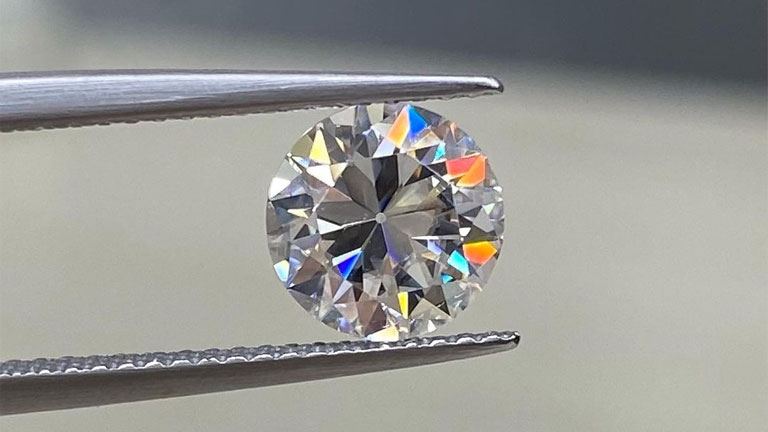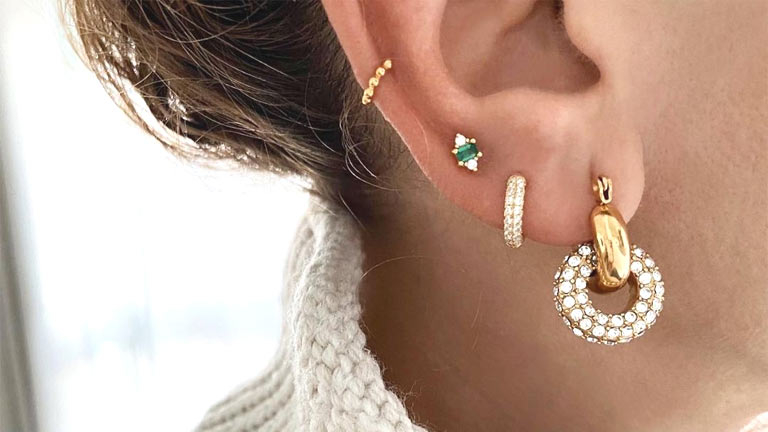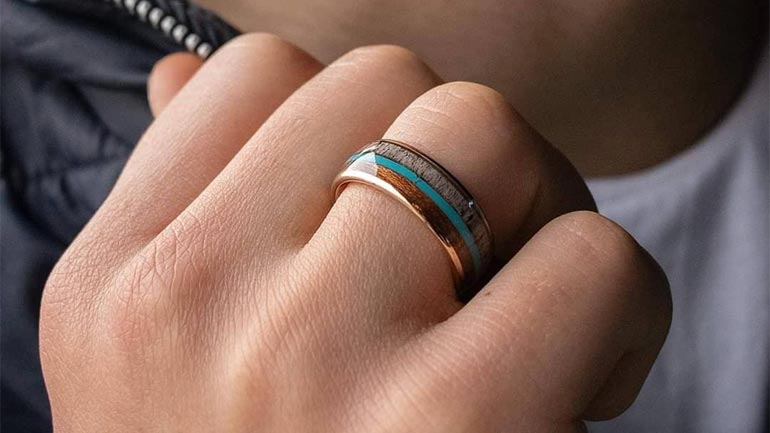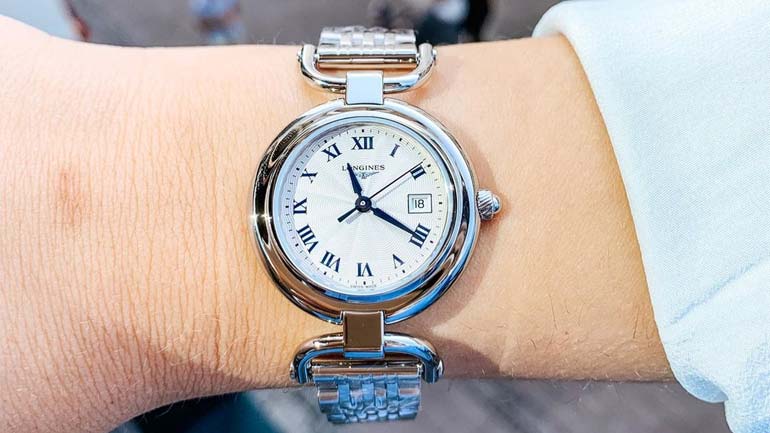
To the untrained eye, diamonds, and moissanite may look similar, but they are unique gemstones with different properties. Both are popular choices for fine jewelry, especially engagement rings. However, it’s important for buyers to determine whether a diamond is authentic.
Buyers can make an informed decision when purchasing jewelry by understanding the similarities and differences between these two gemstones. Additionally, learning about the advantages and disadvantages of choosing a diamond or moissanite can help consumers appreciate their chosen gemstone even more.
This guide also provides tips for testing the authenticity of a diamond, as well as information on the ethics and economics of both stones. It’s essential to consider these factors when making a purchase.
Similarities and Differences
Composition and Structure
Diamonds and moissanite are precious gemstones but differ in composition and structure. Diamonds consist of pure carbon atoms arranged in a crystalline structure, while moissanite is made of silicon carbide. Moissanites are often used as an alternative to diamonds because they have comparable brilliance and fire.
Clarity and Color
When evaluating gemstones, clarity refers to the presence of inclusions or blemishes. The clarity of diamonds is graded on a scale ranging from flawless (no inclusions) to heavily included. Being laboratory-created, Moissanite generally has a slightly higher clarity than most natural diamonds and contains fewer inclusions.
Color is another distinguishing factor between diamonds and moissanite. Diamonds come in various colors, ranging from near-colorless to yellow, while moissanite is typically only available in near-colorless or white varieties. Both gemstones can have some yellow undertones under specific lighting conditions.
Hardness and Durability
Did you know that gemstones are rated for hardness on the Mohs scale? Diamond has the highest rating of 10, while moissanite is a close second with a rating of 9.25. Both gemstones are great options for everyday wear since they are highly resistant to scratches.
When it comes to durability, diamonds are known for their exceptional resistance to damage. Moissanite also has excellent durability due to its hardness, but it is slightly more likely to chip or break than diamonds.
Size, Weight, and Density
Size plays a crucial role when deciding between a diamond and a moissanite. The difference in density and weight can affect both the cost and appearance. Moissanite has a lower density than diamond, resulting in a moissanite stone weighing about 15% less than a diamond of identical size.
Consequently, a diamond the same size as a moissanite will be slightly smaller. Therefore, one should carefully consider the overall size of the stone when selecting a moissanite.
Beauty and Aesthetics
Engagement rings and fine jewelry have long been associated with the timeless beauty of diamonds. Their brilliance, fire, and scintillation make them a classic choice. However, moissanite is becoming increasingly popular due to its comparable optical properties and lower cost.
Moissanite can have even more brilliance and fire than diamonds, resulting in a slightly different appearance. Its double refraction can create additional fire and a stunning effect, while diamonds have a single refraction.
Ultimately, the decision between diamond and moissanite comes down to personal preference, budget, and desired characteristics. Both gems offer beauty and durability, but differences in composition, clarity, color, and size may play a role in your choice.
Testing for Diamond or Moissanite
Visual Inspection
When trying to differentiate between a diamond and a moissanite in jewelry, it’s common, to begin with a visual inspection. Using a jeweler’s loupe, you can closely examine the stone for inclusions, which are more likely to occur in diamonds. Moissanite stones typically appear more colorless in comparison to diamonds, which may have slight tints.
One way to identify moissanite is to look for double refraction, which means that the stone can bend light to create two images. In contrast, diamonds have single refraction. By carefully examining the stone under proper lighting and angles, you may be able to detect this unique characteristic.
Testing Tools
Various testing tools are available to differentiate between a diamond and a moissanite. Diamond testers measure heat conductivity, while moissanite testers detect electrical conductivity. However, since moissanite has a higher heat conductivity than other imitation stones like zircon, diamond testers alone may not provide accurate results. Therefore, it is recommended to use a combination of these tools to get more reliable results.
In addition, using a UV light can also be helpful. Some diamonds may show slight fluorescence under UV light, whereas moissanite usually does not. However, it’s important to note that this test may not be conclusive for some stones, particularly laboratory-grown diamonds that may not exhibit any fluorescence.
Contacting a Professional
If you’re unsure about the identity of your gemstone, seeking advice from a professional is the best course of action. Reputable jewelers or certified gemologists possess the knowledge, expertise, and technology to identify your stone accurately. Companies like James Allen specialize in the diamond industry and have established robust methods for assessing diamond quality.
Consulting a diamond expert gives you the added peace of mind of knowing that the evaluation is impartial and based on scientific findings rather than personal opinions. It’s crucial to work with a trustworthy source to confirm the authenticity of your gemstone and avoid falling prey to fake or synthetic diamonds.
Buying Tips and Precautions
Selecting Reputable Retailers
If you’re interested in purchasing a diamond or moissanite, choosing a trustworthy retailer is crucial to guarantee that you receive a high-quality product. Review online reviews, read about other customers’ experiences, and verify if the retailer holds any accreditations. It’s best to prioritize authorized dealers offering clear product information and prices.
Choosing Quality Products
When choosing a stone for your jewelry, paying attention to its weight and quality is important. Both diamonds and moissanite are measured in carats, with 1 carat equaling 200 milligrams. The heavier the stone, the larger it will appear.
To determine the quality of the stone, examine its sparkle and the “disco ball effect”. Diamonds have a more intense sparkle, while moissanites show a rainbow-like effect. Use a loupe or magnifying device to inspect the stone for inclusion, clarity, and overall appearance. Keep in mind that moissanite is often used as diamond simulants in engagement rings and can be more budget-friendly.
If you have a specific budget, consider the type and quality of the stone. Look for moissanite stones that have been cut and polished to maximize their sparkle and brilliance. A diamond under the same budget may have a lower quality cut, clarity, or color grade.
Documentation and Certification
When buying a diamond or moissanite, it’s important to always ask for proof of authenticity and quality. You should seek a certificate from a reputable organization like the Gemological Institute of America (GIA) for diamonds or Charles & Colvard for moissanite. These certificates provide valuable information about the gemstone and ensure that you’re getting a genuine product
To make sure you’re making a wise purchase, choose a trustworthy retailer that sells high-quality stones. Care carefully inspect the gemstone, paying attention to details like weight and sparkle. And don’t forget to ask for proper documentation and certification to back up the stone’s authenticity. By taking these precautions, you can feel confident in your purchase and make an informed decision.
Frequently Asked Questions
What Are the Key Differences Between Diamonds and Moissanite?
When it comes to jewelry, diamonds, and moissanite are two popular options, but they have significant differences. Diamonds are natural gemstones, while moissanite is lab-created. On the Mohs scale, diamonds score a 10 for hardness, while moissanites score 9.25. Furthermore, moissanites typically have a higher refractive index, producing more fire and brilliance.
How Does the Sparkle of Moissanite Compare to That of a Diamond?
Moissanites are known for their superior fire and brilliance compared to diamonds, thanks to their higher refractive index. This property causes light to enter moissanite at a sharper angle, leading to a greater display of spectral colors. However, some individuals prefer the more subdued sparkle of diamonds.
Can a Moissanite Tester Accurately Identify These Stones?
While a moissanite tester can help distinguish between moissanite and diamonds, it may not always be entirely accurate. To achieve a higher level of precision in identifying stones, using a diamond tester and a moissanite tester together is recommended.
What Are Some Visual Clues to Distinguish a Diamond from a Moissanite?
Moissanites exhibit greater fire and brilliance than diamonds due to their higher refractive index. Diamonds, on the other hand, have a more subdued sparkle and offer a crisper appearance. Moissanite may appear slightly hazy or less clear than diamonds in larger sizes.
Is It Possible for an Average Person to Differentiate Between Diamond and Moissanite?
Differentiating between a diamond and a moissanite can be difficult for those without gemology or jewelry expertise. Gemologists and jewelers, equipped with specialized tools and testing methods, can accurately identify the stones. Seeking professional advice is advised if there are doubts regarding the authenticity of a gemstone.




